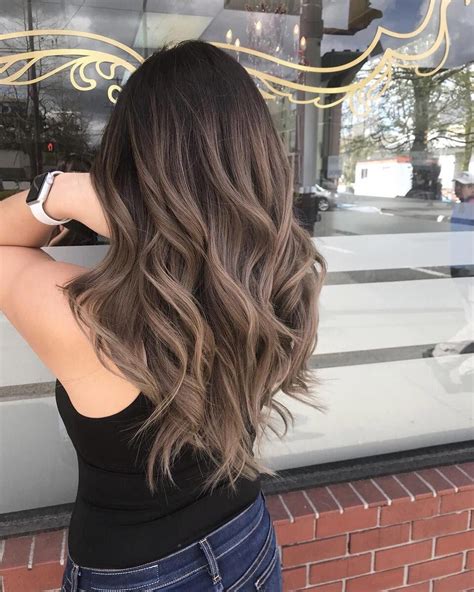Introduction:

Ombre blonde, a hair coloring technique that creates a seamless blend from dark roots to lighter ends, has taken the beauty world by storm. With its versatility, flattering shades, and ability to enhance natural features, this style has become a must-try for fashion-forward individuals seeking a captivating transformation.
Pain Points and Motivations:
- Monotony: Traditional hair colors can often lack depth and dimension, leaving room for a more vibrant and dynamic style.
- Aging Concerns: Ombre blonde strategically draws attention away from grays and highlights the face, creating a more youthful appearance.
- Desire for Change: Many individuals seek a non-permanent way to experiment with new hair colors without committing to a drastic alteration.
Types of Ombre Blonde:
There are countless variations of ombre blonde, allowing you to customize the look to your preferences and hair type.
1. Root Melt Ombre: A subtle blend that seamlessly transitions from natural roots to lighter, sun-kissed ends.
2. Reverse Ombre: A bold twist that features lighter roots fading into darker ends, creating a dramatic contrast.
3. Shadow Root Ombre: A soft and natural-looking ombre that incorporates a subtle shadow at the roots for a fuller, dimensional look.
4. Balayage Ombre: A hand-painted technique that creates soft, graduated highlights throughout the hair, resembling natural beach waves.
Importance of Maintenance:
Maintaining your ombre blonde requires regular touch-ups to prevent the lines of demarcation from becoming noticeable. The frequency of touch-ups will depend on your hair growth rate, but most experts recommend refreshing the color every 8-12 weeks.
Tips and Tricks:
- Embrace Your Natural Roots: Allow some of your natural root color to show through for a more lived-in, effortless look.
- Customize Your Shade: Consult with a professional colorist to determine the ideal blonde shade that complements your skin tone and hair texture.
- Use Color-Protecting Products: Invest in shampoos, conditioners, and leave-in treatments designed to protect your color-treated hair from fading and damage.
- Limit Heat Styling: Excessive heat can weaken and damage your hair, so minimize the use of hot tools and opt for heat protectants.
Common Mistakes to Avoid:
- Over-Processing: Avoid bleaching your hair multiple times to achieve a lighter shade, as this can lead to damage and breakage.
- Uneven Lines: Ensure your hair is sectioned properly before applying the color to avoid uneven distribution and visible lines of demarcation.
- Ignoring Maintenance: Regular touch-ups are essential to maintain a vibrant and seamless ombre look.
- Dryness and Damage: Be aware that chemical processing can strip your hair of its natural oils, so deep conditioning and moisturizing treatments are crucial.
Applications Beyond Hair Coloring:
The concept of ombre can be applied to various other industries, inspiring innovative and eye-catching creations.
- Interior Design: Create a captivating focal point by incorporating an ombre effect to walls, fabrics, or furniture.
- Fashion: Design garments and accessories that feature a gradual blend of colors or patterns to add visual interest.
- Makeup: Apply eyeshadow, blush, or lipstick in ombre shades to create a multi-dimensional and alluring look.
- Food and Beverage: Elevate culinary presentations by serving desserts or cocktails with ombre-inspired layers and colors.
Conclusion:
Ombre blonde remains a versatile and flattering hair coloring technique that can transform your look and enhance your natural beauty. By embracing the right shade, following maintenance tips, and avoiding common mistakes, you can achieve a stunning and radiant ombre that complements your personal style and boosts your confidence.
